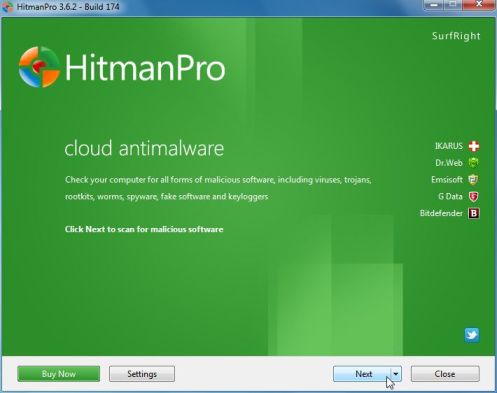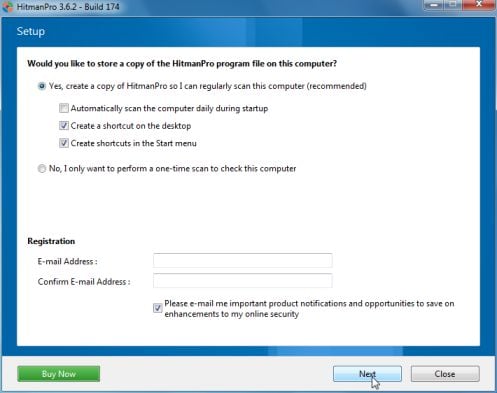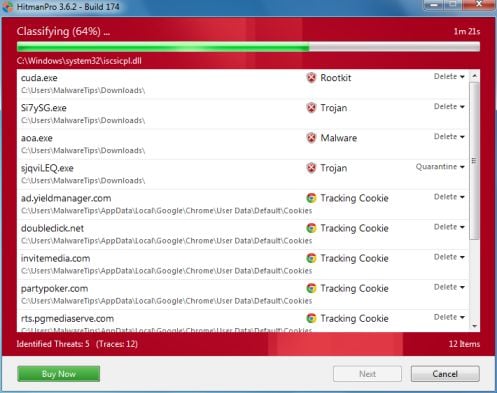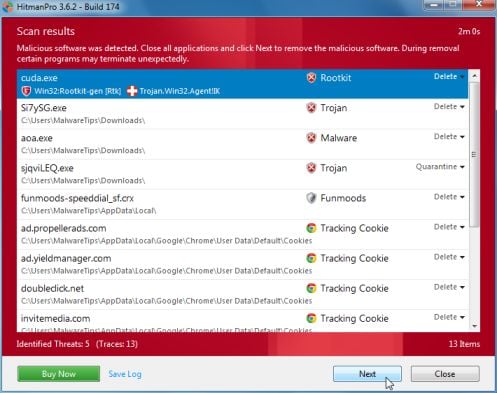24×7 Help is a software/call service (+1561-948-3761) that provides via an hourly charge remote support to fix your computer issues. Once installed however, 24×7 Help attempts to upsell various software products including registry and PC optimization programs.
![24x7 Help virus [Image: 24x7 Help virus]](http://malwaretips.com/blogs/wp-content/uploads/2013/08/24x7-help-virus.jpg)
24×7 Help is typically added when you install another free software (video recording/streaming, download-managers or PDF creators) that had bundled into their installation this program. Very often users have no idea where did it come from, so it’s not surprising at all that most of them assume that 24×7 Help is a virus.
24×7 Help is application that displays contact information for a remote support company and suggests that you download a variety of security programs to fix the issues that this program has found on users machines.
Once installed, 24×7 will automatically start when you login to Windows and constantly display an icon of a support person’s head on the title bar of the active Window. If you click on this icon, you will be shown a screen that promotes their remote support services as well as PCRx Registry Cleaner, Spyware Terminator 2012, and Online Vault Backup. The text of the 24×7 pop-up is:
24×7 Help emergency computer assistance
+1561-948-3761
OurMicrosoft trained technicians are stating by reading to help you resolve all your PC issues and more.
Receive instant,friendly support service for issues with your computer, network, software printer and more.
![24x7 Help pop-up virus [Image: 24x7 Help pop-up virus]](http://malwaretips.com/blogs/wp-content/uploads/2013/08/24x7-Help-popup.jpg)
24×7 Help it’s technically not a virus, but it does exhibit plenty of malicious traits, such as rootkit capabilities to hook deep into the operating system, browser hijacking, and in general just interfering with the user experience. The industry generally refers to it as a “PUP,” or potentially unwanted program.
You should always pay attention when installing software because often, a software installer includes optional installs, such as this 24×7 Help. Be very careful what you agree to install.
Always opt for the custom installation and deselect anything that is not familiar, especially optional software that you never wanted to download and install in the first place. It goes without saying that you should not install software that you don’t trust.
How to remove 24×7 Help (Virus Removal Guide)
This page is a comprehensive guide, which will remove 24×7 Help pop-ups from your computer, and any other adware program that may have been installed during the setup process.
Please perform all the steps in the correct order. If you have any questions or doubt at any point, STOP and ask for our assistance.
STEP 1: Uninstall 24×7 Help programs from your computer
STEP 2: Remove 24×7 Help malicious files with AdwCleaner
STEP 3: Remove 24×7 Help registry keys with Junkware Removal Tool
STEP 4: Remove 24×7 Help virus with Malwarebytes Anti-Malware Free
STEP 5: Double-check for the 24×7 Help infection with HitmanPro
STEP 1 : Uninstall 24×7 Help programs from your computer
- To uninstall the 24×7 Help program from your computer, click the Start button, then select Control Panel, and click on Uninstall a program.
If you are using Windows 8, simply drag your mouse pointer to the right edge of the screen, select Search from the list and search for “control panel“. Or you can right-click on a bottom left hot corner (formerly known as the Start button) and select Control Panel from there, then select Uninstall a program.
![Click on Uninstall a program [Image: Uninstall a program]](data:image/gif;base64,R0lGODlhAQABAAAAACH5BAEKAAEALAAAAAABAAEAAAICTAEAOw==)
- When the Add/Remove Programs or the Uninstall a Program screen is displayed, scroll through the list of currently installed programs and uninstall 24×7 Help (Crawler, LLC), PC Fix Speed, PCRx Registry Cleaner, Spyware Terminator 2012, Online Vault Backup and any other recently installed or unknown programs from your computer.
![Uninstall 24x7 Help programs from Windows [Image: Uninstall 24x7 Help programs from Windows]](data:image/gif;base64,R0lGODlhAQABAAAAACH5BAEKAAEALAAAAAABAAEAAAICTAEAOw==)
Depending on what program has installed 24×7 Help infection, the above programs may have a different name or not be installed on your computer. If you cannot find any unwanted programs on your computer, you can proceed with the next step.
STEP 2: Remove 24×7 Help malicious files AdwCleaner
- You can download AdwCleaner utility from the below link.
ADWCLEANER DOWNLOAD LINK (This link will automatically download AdwCleaner on your computer) - Before starting AdwCleaner, close all open programs and internet browsers, then double-click on the AdwCleaner icon.
![AdwCleaner Icon [Image: AdwCleaner Icon]](data:image/gif;base64,R0lGODlhAQABAAAAACH5BAEKAAEALAAAAAABAAEAAAICTAEAOw==)
If Windows prompts you as to whether or not you wish to run AdwCleaner, please allow it to run. - When the AdwCleaner program will open, click on the Search button as shown below.
![Click on Search to scan for 24x7 Help virus [Image: AdwCleaner scanning for 24x7 Help Search]](data:image/gif;base64,R0lGODlhAQABAAAAACH5BAEKAAEALAAAAAABAAEAAAICTAEAOw==)
The program will now start to search for 24×7 Help adware that may be installed on your computer. When it has finished it will display a notepad screen that contains a log file of all the 24×7 Help browser extensions, files, and registry keys that have been detected. Unless you see a program name that you know should not be removed, please close the Notepad window and continue with the next step. - To remove the 24×7 Help malicious files that were detected in the previous step, please click on the Delete button on the AdwCleaner screen.
![Click on Delete to remove 24x7 Help virus [Image: Adwcleaner removing 24x7 Help virus]](data:image/gif;base64,R0lGODlhAQABAAAAACH5BAEKAAEALAAAAAABAAEAAAICTAEAOw==)
AdwCleaner will now prompt you to save any open files or data as the program will need to reboot the computer. Please do so and then click on the OK button. - AdwCleaner will now delete all detected adware from your computer. When it is done it will display an alert that explains what PUPs (Potentially Unwanted Programs) and Adware are. Please read through this information and then press the OK button. You will now be presented with an alert that states AdwCleaner needs to reboot your computer.
Please click on the OK button to let AdwCleaner reboot your computer.
STEP 3: Remove 24×7 Help registry keys Junkware Removal Tool
- You can download the Junkware Removal Tool utility from the below link:
JUNKWARE REMOVAL TOOL DOWNLOAD LINK (This link will automatically download the Junkware Removal Tool utility on your computer) - Once Junkware Removal Tool has finished downloading, please double-click on the JRT.exe icon as seen below.
![Double-click on the Junkware Removal Tool utility [Image: Junkware Removal Tool]](data:image/gif;base64,R0lGODlhAQABAAAAACH5BAEKAAEALAAAAAABAAEAAAICTAEAOw==)
If Windows prompts you as to whether or not you wish to run Junkware Removal Tool, please allow it to run. - Junkware Removal Tool will now start, and at the Command Prompt, you’ll need to press any key to perform a scan for the 24×7 Help virus.
![Junkware Removal Tool scanning for 24x7 Help virus [Image: Junkware Removal Tool scanning for 24x7 Help virus]](data:image/gif;base64,R0lGODlhAQABAAAAACH5BAEKAAEALAAAAAABAAEAAAICTAEAOw==)
Please be patient as this can take a while to complete (up to 10 minutes) depending on your system’s specifications. - When the scan Junkware Removal Tool will be completed, this utility will display a log with the malicious files and registry keys that were removed from your computer.
![Junkware Removal Tool final log [Image: Junkware Removal Tool final log]](data:image/gif;base64,R0lGODlhAQABAAAAACH5BAEKAAEALAAAAAABAAEAAAICTAEAOw==)
STEP 4: Remove 24×7 Help virus with Malwarebytes Anti-Malware Free
- You can download Malwarebytes Anti-Malware Free from the below link, then double-click on the icon named mbam-setup.exe to install this program.
MALWAREBYTES ANTI-MALWARE DOWNLOAD LINK(This link will open a download page in a new window from where you can download Malwarebytes Anti-Malware Free) - When the installation begins, keep following the prompts in order to continue with the setup process, then at the last screen click on the Finish button.
![Malwarebytes Anti-Malware installation screen [Image: Malwarebytes Anti-Malware final installation screen]](data:image/gif;base64,R0lGODlhAQABAAAAACH5BAEKAAEALAAAAAABAAEAAAICTAEAOw==)
- On the Scanner tab, select Perform quick scan, and then click on the Scan button to start searching for the 24×7 Help malicious files.
![Run a Quick Scan with Malwarebytes Anti-Malware [Image: Malwarebytes Anti-Malware Quick Scan]](data:image/gif;base64,R0lGODlhAQABAAAAACH5BAEKAAEALAAAAAABAAEAAAICTAEAOw==)
- Malwarebytes’ Anti-Malware will now start scanning your computer for 24×7 Help virus as shown below.
![Malwarebytes Anti-Malware scanning for 24x7 Help [Image: Malwarebytes Anti-Malware scanning for 24x7 Help virus]](data:image/gif;base64,R0lGODlhAQABAAAAACH5BAEKAAEALAAAAAABAAEAAAICTAEAOw==)
- When the Malwarebytes Anti-Malware scan has finished, click on the Show Results button.
![Malwarebytes when the system scan has completed [Image: Malwarebytes Anti-Malware scan results]](data:image/gif;base64,R0lGODlhAQABAAAAACH5BAEKAAEALAAAAAABAAEAAAICTAEAOw==)
- You will now be presented with a screen showing you the computer infections that Malwarebytes Anti-Malware has detected. Make sure that everything is Checked (ticked), then click on the Remove Selected button.
![Malwarebytes Anti-Malwar removing 24x7 Help [Image: Malwarebytes Anti-Malwar removing 24x7 Help]](data:image/gif;base64,R0lGODlhAQABAAAAACH5BAEKAAEALAAAAAABAAEAAAICTAEAOw==)
- Once your computer will restart, open Malwarebytes Anti-Malware and perform a Full System scan to verify that there are no remaining threats.
Double-check for the 24×7 Help infection with HitmanPro
- You can download HitmanPro from the below link:
HITMANPRO DOWNLOAD LINK (This link will open a web page from where you can download HitmanPro) - Double-click on the file named HitmanPro.exe (for 32-bit versions of Windows) or HitmanPro_x64.exe (for 64-bit versions of Windows). When the program starts you will be presented with the start screen as shown below.

Click on the Next button, to install HitmanPro on your computer.

- HitmanPro will now begin to scan your computer for 24×7 Help malicious files.

- When it has finished it will display a list of all the malware that the program found as shown in the image below. Click on the Next button, to remove 24×7 Help adware.

- Click on the Activate free license button to begin the free 30 days trial, and remove all the malicious files from your computer.
![HitmanPro free 30 days trial [Image: HitmanPro 30 days activation button]](data:image/gif;base64,R0lGODlhAQABAAAAACH5BAEKAAEALAAAAAABAAEAAAICTAEAOw==)
Your computer should now be free of the 24×7 Help infection. If your current anti-virus solution let this infection through, you may want to consider purchasing the PRO version of Malwarebytes Anti-Malware to protect against these types of threats in the future, and perform regular computer scans with HitmanPro.
If you are still experiencing problems while trying to remove 24×7 Help virus from your machine, please start a new thread in our Malware Removal Assistance

![Click on Uninstall a program [Image: Uninstall a program]](http://malwaretips.com/blogs/wp-content/uploads/2013/03/uninstall-a-program-windows.jpg)
![Uninstall 24x7 Help programs from Windows [Image: Uninstall 24x7 Help programs from Windows]](http://malwaretips.com/blogs/wp-content/uploads/2013/08/24x7-Help-uninstall.jpg)
![Click on Search to scan for 24x7 Help virus [Image: AdwCleaner scanning for 24x7 Help Search]](http://malwaretips.com/blogs/wp-content/uploads/2013/06/adwcleaner-scan.jpg)
![Click on Delete to remove 24x7 Help virus [Image: Adwcleaner removing 24x7 Help virus]](http://malwaretips.com/blogs/wp-content/uploads/2013/06/adwcleaner-virus-removal.jpg)
![Junkware Removal Tool scanning for 24x7 Help virus [Image: Junkware Removal Tool scanning for 24x7 Help virus]](http://malwaretips.com/blogs/wp-content/uploads/2013/06/junkware-removal-tool.jpg)
![Junkware Removal Tool final log [Image: Junkware Removal Tool final log]](http://malwaretips.com/blogs/wp-content/uploads/2013/06/Junkware-log.jpg)
![Malwarebytes Anti-Malware installation screen [Image: Malwarebytes Anti-Malware final installation screen]](http://malwaretips.com/blogs/wp-content/uploads/2013/01/malwarebytes-installation.jpg)
![Run a Quick Scan with Malwarebytes Anti-Malware [Image: Malwarebytes Anti-Malware Quick Scan]](http://malwaretips.com/blogs/wp-content/uploads/2013/01/malwarebytes-quick-scan.jpg)
![Malwarebytes Anti-Malware scanning for 24x7 Help [Image: Malwarebytes Anti-Malware scanning for 24x7 Help virus]](http://malwaretips.com/blogs/wp-content/uploads/2013/01/malwarebytes-scan.jpg)
![Malwarebytes when the system scan has completed [Image: Malwarebytes Anti-Malware scan results]](http://malwaretips.com/blogs/wp-content/uploads/2013/01/malwarebytes-scan-results.jpg)
![Malwarebytes Anti-Malwar removing 24x7 Help [Image: Malwarebytes Anti-Malwar removing 24x7 Help]](http://malwaretips.com/blogs/wp-content/uploads/2013/01/malwarebytes-virus-removal.jpg)




![HitmanPro free 30 days trial [Image: HitmanPro 30 days activation button]](http://malwaretips.com/blogs/wp-content/uploads/2012/11/hitmanpro-activation.jpg)









